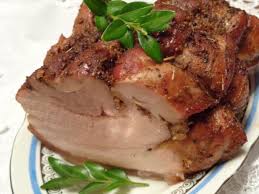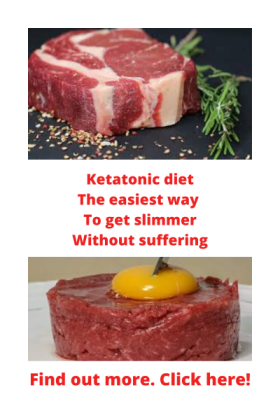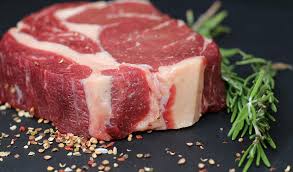Principles of a ketogenic diet
The ketogenic diet is a diet that assumes an increase in fat supply while reducing carbohydrate intake. However, in order for it to be effective and not pose a threat to the body, it should be carried out only under the supervision of a doctor and dietitian.
The assumptions of the ketogenic diet are mainly based on eating the right amount of fats, carbohydrates and proteins. In the standard daily diet of most of us, carbohydrates constitute 50%, proteins 15%, and fats 35%. all meals consumed.
In the ketogenic diet, these proportions are radically different. The ketogenic diet involves eating meals in which as much as 80-90 per cent. They are fats, and the remaining part, i.e. 10-20 per cent. carbohydrates and protein. In non-diets, carbohydrates are the main source of energy. In the bodies of people on a ketogenic diet, there are few carbohydrates, so the source of energy is insufficient. The body begins to look for alternative sources, which are fats.
It comes to the so-called ketosis or the process of fat breakdown. As a result, the concentration of ketone bodies in the blood is much higher than the concentration of glucose. When the amount of carbohydrates is low, hunger is inhibited. However, it increases when the carbohydrates in the ketogenic diet are too much.
Advantages of a ketogenic diet
The undoubted advantage of the ketogenic diet is that for the first 2-3 months of using it we feel light, we are full of energy, our mood improves. The main goal of a ketogenic diet is weight loss – and indeed, strict adherence to diet principles means that weight decreases very dynamically.
Since the use of glucose as an energy source is limited, it is used by the nervous system. So there is a decrease in the amount of glycogen, i.e. a polysaccharide made of individual glucose particles. The decrease in glycogen also reduces the amount of water that glycogen accumulates in the muscles. As a result, our body weight decreases.
Why the ketogenic diet
There is a reason why the ketogenic diet is also recommended for patients with epilepsy, especially children struggling with drug-resistant epilepsy. An indication for the use of a ketogenic diet for health reasons is also:
Rett syndrome;
Dravet syndrome;
Doose syndrome;
tuberous sclerosis.
Important It is unclear why the ketogenic diet reduces the symptoms and frequency of seizures. Experts suspect that this may be due to the fact that ketone bodies protect nerve cells against free radical attack.
Among the advantages of using a ketogenic diet, it is also often mentioned that support in the fight against insulin resistance, regulates insulin secretion, reduces the appetite for sweets, ensures a feeling of satiety for a long time, reduces swelling and helps get rid of digestive ailments, such as bloating.
Disadvantages of the ketogenic diet
Although the ketogenic diet is very effective when it comes to weight loss, it cannot be used by anyone because of its potential side effects. Despite the initial injection of energy, better mood and feeling of lightness, after about 2-3 months everything passes. There are digestive problems, a decrease in energy, fatigue, problems with concentration, a constant desire for sweets and an unpleasant body odour.
A large amount of fat in the diet can lead to dysregulation of intestinal peristalsis and constant lower abdominal pain. Often people on a ketogenic diet complain of pollakiuria. After prolonged use of the diet, urolithiasis and increased uric acid may develop.
The ketogenic diet should absolutely not be used in people with kidney, liver and pancreas diseases, as well as those with ketone metabolism burden. Many experts also believe that the ketone diet can negatively affect the body’s hormonal balance.
What to eat on a ketogenic diet?
On a ketogenic diet, what you eat is equivalent to observing the right proportions of fats, carbohydrates and proteins. The volume of nutrients should be satisfied with wholesome, good quality products. It is fats that are the main source of calories, so it is especially worth ensuring their quality.
The main principle
The main principle we should follow when choosing fats consumed during the diet is that they should be high-fat products, but as little processed as possible. We choose saturated fat (butter, lard, coconut oil) and monounsaturated (nuts, avocado, oil). But what about polyunsaturated fats? If they are of animal origin, e.g. in fatty fish – we should eat them as much as possible. However, if they are found in processed products, such as margarine – we better avoid them. So what should be on the list of fat ingredients?
The protein in the keto diet
The protein in the ketogenic diet should be derived from meat. The basic rule for animal-derived protein consumed on a ketogenic diet is that the more meat has protein, the less we should eat. It should be remembered that it should be of good quality meat, coming from proven farms. The same rule also applies to eggs – in this way we will avoid substances that burden our body.
Carbohydrates
When it comes to carbohydrates in the ketogenic diet, they should mainly come from fruits and vegetables. The basic rule in their case is that the more carbohydrates in vegetables and fruits, the less we should eat. We should choose vegetables with the least amount of sugar, preferably green, growing above the ground.

Contrary to appearances, the list of products allowed on the ketogenic diet is very rich and allows you to prepare a variety of meals.
Products allowed
Products allowed on a ketogenic diet are:
- meat – beef, pork, venison, poultry, lamb. Meat should come from trusted suppliers or from organic farms;
- fish and seafood – mackerel, salmon, sardines and all seafood;
- eggs – they should come from a proven supplier or organic farming;
- natural fats – butter, olive oil, coconut oil;
- vegetables – spinach, broccoli, cauliflower, kale, asparagus, eggplant, olives, zucchini, lettuce, cucumber, mushrooms, avocado, cabbage, Brussels sprouts;
- dairy products – full-fat milk, cream, yoghurt;
- nuts;
- drinks – still water, black or green tea (without sugar), broth, coconut or almond milk;
- spices (in reasonable quantities) – basil, coriander, oregano, cinnamon, cumin, chilli, parsley, thyme, rosemary.
What needs to be avoided on a ketogenic diet?
When determining the menu in the ketogenic diet, you need to consider not only products that can be eaten but also those that are strictly prohibited. Belong to them:
- sugars – sweets, carbonated drinks, sweetened juices;
- grains – wheat products, corn, rice, pastries, pasta, breakfast cereals;
- starch – potatoes, bananas, oat flakes;
- fruits – bananas, grapes, pineapple, watermelon, apples, oranges;
- light products.
Ketogenic diet – effects
The effects of the ketogenic diet cause a clear decrease in body weight – the slimming rate depends, however, on individual predispositions and the initial weight.
It is worth being aware that in the first phase of the diet, there may be many side effects, including dizziness, drowsiness or constipation. After a maximum of a few weeks, such symptoms disappear as soon as the body switches to a new mode of nutrition. However, if the negative effects of using the diet do not disappear, you should stop using it and consult a doctor as soon as possible, who will definitely order blood and urine tests.








